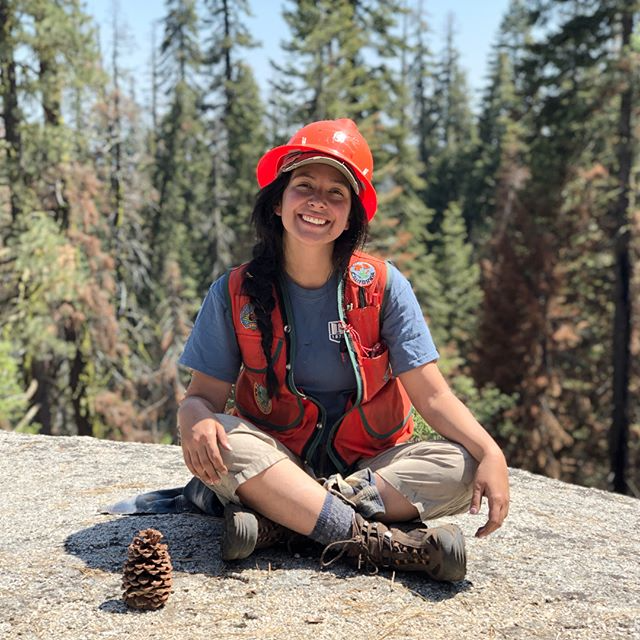I love that the discipline of ecohydrology is so broad. I think the boundaries between earth systems are blurred and so should be the frameworks we use to study them. I think the field of ecohydrology is simply the study of the feedbacks between ecological and hydrologic processes.
What are your undergraduate and graduate degrees in?
My undergraduate degree is in Forest Hydrology from Humboldt State University and my graduate degree will be in Earth Science from the University of California, Santa Cruz.
How did you arrive at working in/thinking about ecohydrology?
I have the opportunity and passion to pursue a career in ecohydrology in large part due to two undergraduate research experiences. I was an “Our Earth Lodge” REU Fellow at Cedar Creek Ecological Reserve under the mentorship of Dr. Jake Grossman. In this experience, I was not only introduced to the field of ecohydrology but the importance of natural reserves to conduct research. Shortly after that experience, at Humboldt State University, I worked in Dr. Jasper Oshun’s Critical Zone Lab and explored topics such as the potential causes of water isotope fractionation and plant-water use. This fieldwork was conducted at the heavily instrumented hillslope named “Rivendell” at Angelo Coast Range Reserve. These two research experiences stand out to me because I was not only able to explore research questions at the forefront of ecohydrology but I learned that interdisciplinary science and collaboration were critical to scientific advancements. At both Cedar Creek and Rivendell, I was inspired by the legacy of hard work by staff, undergraduates, graduate students, and PIs required to explore how water and plants shape the terrestrial landscape – I thought to myself: “wow, I want to be a part of that”.
What do you see as an important emerging area of ecohydrology?
I would like to break this up into two branches: emerging tools and emerging ideas. Stable water isotopes have been an invaluable tool aiding in our ability to understand the age, origin, and partitioning of water at the catchment scale. I believe this is still an emerging tool in ecohydrology. By examining water extraction techniques, integrating water isotope data with other hydrologic and plant hydraulic measurements, and developing theoretical frameworks such as “StorAge Selection” functions we are still exploring the power and limitations of water isotopes as an ecohydrologic tool. As for an emerging idea…gosh this was a hard one! I think gone are the days that trees are seen as simply straws in the ground. Trees are the “builders and plumbers” of the critical zone (Brantley et al., 2017) and central to this idea are: ROOTS! I think emerging ideas explore controls on root structural patterns, root water uptake and redistribution, and root-rock interactions.
Do you have a favorite ecohydrology paper? Describe/explain.
My favorite ecohydrology paper is by Brooks et al (2015) titled “Hydrologic partioning in the critical zone: Recent advances and opportunities for developing transferable understanding of water cycle dynamics”. It is a remarkable review paper that highlights the challenges and visions for the future of hydrology/ecohydrology. It reads like a good book that has a section for everyone regardless of your subdiscipline. It is a paper I return to when I need a little inspiration.
What do you do for fun (apart from ecohydrology)?
I love to go camping, hiking and a good midnight drive to go star-gazing. In addition, I honestly can’t think of a better night than sharing science ideas with friends over good food and drinks.

 RSS Feed
RSS Feed